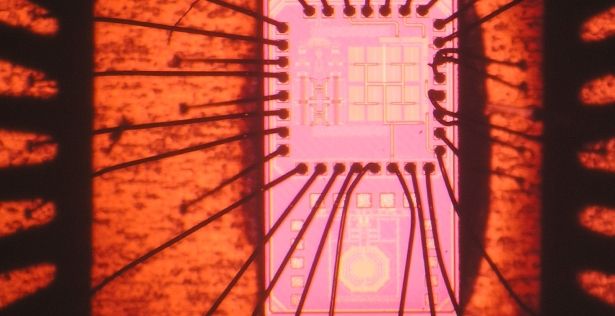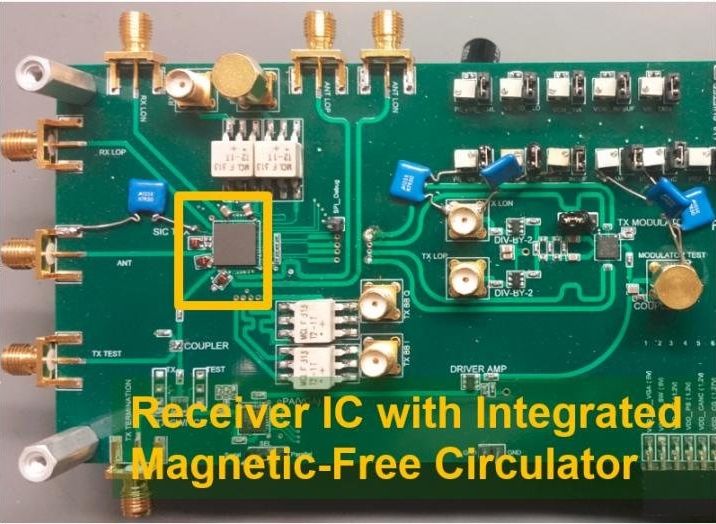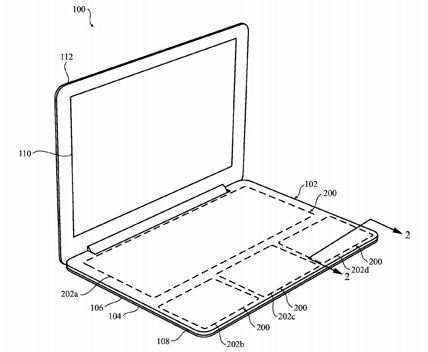“This technology could revolutionize the field of telecommunications,” says Krishnaswamy, director of the Columbia High-Speed and Mm-wave IC (CoSMIC) Lab. “Our circulator is the first to be put on a silicon chip, and we get literally orders of magnitude better performance than prior work. Full-duplex communications, where the transmitter and the receiver operate at the same time and at the same frequency, has become a critical research area and now we’ve shown that WiFi capacity can be doubled on a nanoscale silicon chip with a single antenna. This has enormous implications for devices like smartphones and tablets.”
Krishnaswamy’s group has been working on silicon radio chips for full duplex communications for several years and became particularly interested in the role of the circulator, a component that enables full-duplex communications where the transmitter and the receiver share the same antenna. In order to do this, the circulator has to “break” Lorentz Reciprocity, a fundamental physical characteristic of most electronic structures that requires electromagnetic waves travel in the same manner in forward and reverse directions.
“Reciprocal circuits and systems are quite restrictive because you can’t control the signal freely,” says PhD student Negar Reiskarimian, who developed the circulator and is lead author of the Nature Communications paper. “We wanted to create a simple and efficient way, using conventional materials, to break Lorentz Reciprocity and build a low-cost nanoscale circulator that would fit on a chip. This could open up the door to all kinds of exciting new applications.”
Read more









